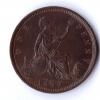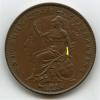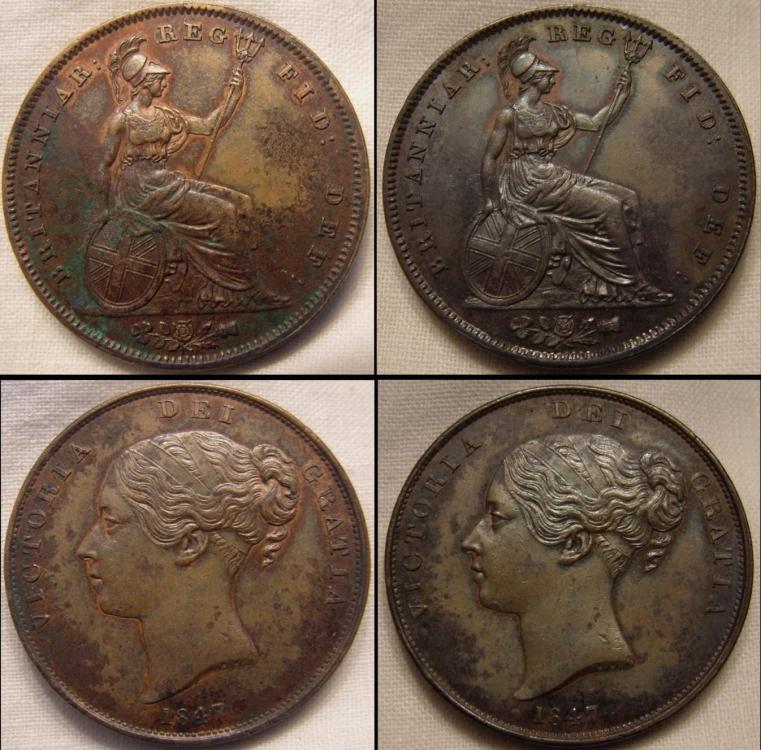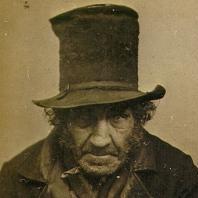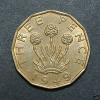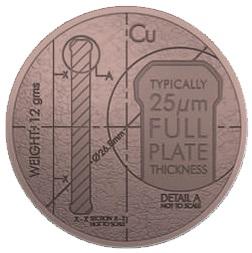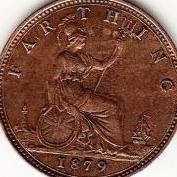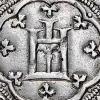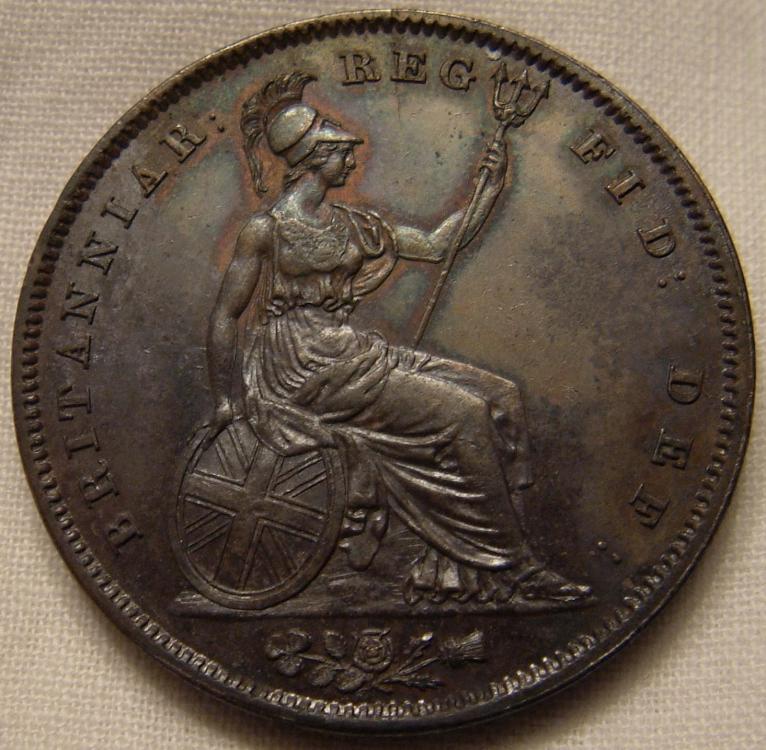Leaderboard
Popular Content
Showing content with the highest reputation on 01/13/2021 in all areas
-
Ian was very lucky with this coin in that there was a remarkably good surface preserved under the verdigris (green areas) and under the oxide (brown areas). Held to the light, the field almost prooflike, and had I stripped the whole coin to a reactive surface and then evenly toned , this sheen would have been lost so I decided to tone through the existing, which could be taken further over time. When I first saw the coin the verd looked almost waxy, and I wondered whether there was an organic element, so I tried a couple of organic solvents - acetone, DMSO, petrol- which had no effect on the verd but did at least remove any contaminants that might have blocked the verdicare. Under the microscope it was clear that all the discoloured areas of the coin has experienced corrosion, being both very hard and adherent. Working each side sequentially, reverse first, it took about a day of Verdicare to start to soften the corrosion and enable a gentle picking off with the needle, in tiny plaques; I had to take this very slowly in sessions of an hour or so, microscope work is hard on the eyes and neck. I suspect it took 15 to 20 hours of microscope time. The fields were mostly done with the polished tip steel needle, he detail particularly the denticles with an orange needle on insulin syringe (courtesy of our late diabetic cat). I was always working through a thin layer of Verdicare. A very steady hand is needed, and pressure on the verd rather than the coin. There was a good cleavage plane of reddish oxide on the surface of the coin, which helped a lot. My feeling is that the coin, while not perfect of course, has come out better than I expected Jerry4 points
-
2 points
-
2 points
-
Here's a reply she sent to me last week when I suggested that she be careful not to give it away as it is an extremely valuable coin. "Hello im not going to give it away I don't have to sell the coin if I don't want to I have already asked ebay but I have read about the coin and mum really did live very near to the church and grandad lived at 25 acre road straight opposite the church I was going to do as mum asked but that was before they told my mum basically to sod off but the vicker was willing to stand graveside for 15 mins talking about God for 700 pound but wasn't willing to bless mum in the church that didn't go down well especially when people was still allowed in i was a girl when we used to look for the mice on the furnishings in the church and i know about the penny I looked it up myself but I dont know the authenticity so I can't list it as authentic ebay said i cant but im not about to send it in the post with what's going on there is nothing open thanks to boris and i really won't pop it in the post would you . And mum didnt like dealers So I don't have to sell it if I don't want to mum has other coins gold silver anyway I have to go to work Regards Michelle" This raises various questions, i.a. : - If not using commas was a crime would it result in long sentences? - 'the mice on the furnishings' - Robert Thompson? I wonder if Thompson is known to have made pieces for St. Cross Church? - Is a Vicker someone who is trained to apply Vicks? etc etc2 points
-
1 point
-
1 point
-
1 point
-
1 point
-
1 point
-
And funny enough they are not copper but bronze plated steel There is a good case for just not minting anymore and letting them circulate till they die a slow death .1 point
-
1 point
-
Thank you Paddy I guess you're right, I thought that price could be high too ... Even if it seems that the coins was sold (but they are a great dealer). In any case the date 1603 seems to be quite hard to find compared to the 1601 and 1602. I tried to see on the traditional online archives like acsearch or sixbid's archive and I found just an other 1603 quarter merk sold by DNW with two 1/8 merk 1062 in 2017.1 point
-
1 point
-
1 point
-
Nothing like as scarce as a £500 price ticket would suggest! A quick search on Ebay's completed listings finds two of similar period sold for £50 and £60. EG: https://www.ebay.co.uk/itm/Rare-James-VI-quarter-thistle-merk-Scottish-hammered-Coin-1601-/353341519725?hash=item5244cbb76d%3Ag%3AJTkAAOSw-6xfQUWF&nma=true&si=sdsWcVmnWAUu62OHx12jAVvAjjE%3D&orig_cvip=true&nordt=true&rt=nc&_trksid=p2047675.l2557 and while the condition of yours may be slightly better, not enough for a 10x increase. - in my view.1 point
-
I haven't seen one, but haven't looked. All those I have images of are 1+A.1 point
-
Correct. In common with most other people, neither of us win the lottery. However, many 'rarities' known only to that man in the pub or on social media are found on a daily basis.1 point
-
1 point
-
News!!: I believe that I have secured this 2002 Jamaica proof set. I will post when in hand....At long last. Now for the 1984 Jamaica Specimen Set from the Franklin Mint......1 point
-
Well kids, no update at all. I can not find either this 2002 proof set or the 1984 specimen set. However, on a related note, I got two quite rare bits in the last 6 months: 1976 Malta Franklin Mint 25c Uncirculated Matte. - I got this from a coin dealer on Malta. From looks of it, it was tossed in a bag at time and made the trip to Valetta. I have never seen another ( I got the 1976 FM 50c in Matte a couple of years ago). 1984 Franklin Mint Uncirculated (Proof Like) 50c - this I had graded at PCGS and is on their census, also the only one I have ever seen. Numismata?? site has this catalogued but doubt they have ever seen it. I bought this off Ebay for a grand total with shipping of $3.59 USD! l love finding coins like this.1 point
